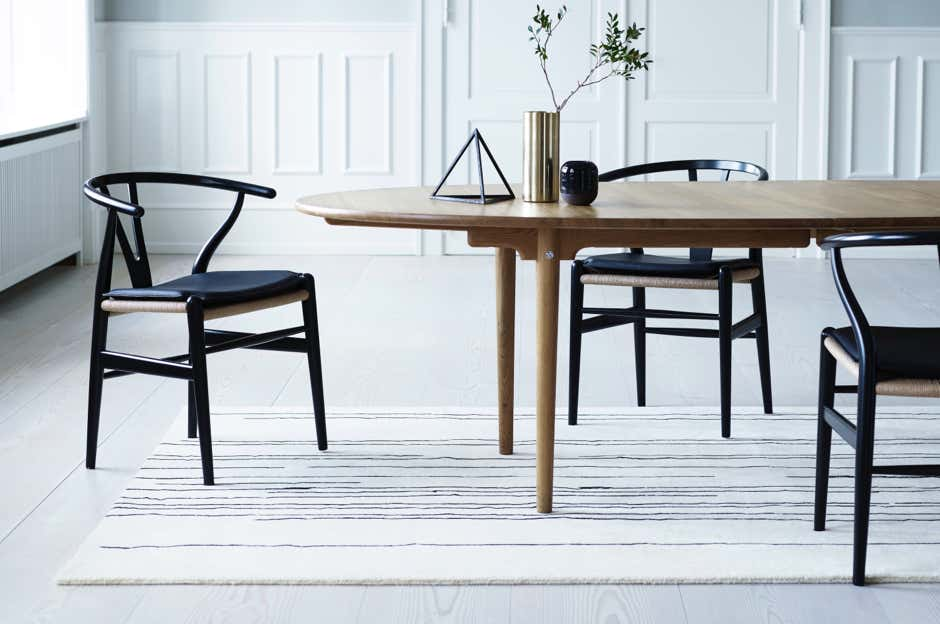
Specializing in Nordic design, Scandinavia Design invites you to discover the most beautiful Scandinavian design tables by leading designers and brands.
About design tables
There's nothing more difficult than designing a table that's both functional and aesthetically pleasing: while there are a number of highly recognizable design chairs and lamps, the functional constraints weighing down on a table seem so strong that the creative aspect seems to be relegated to the background.
Yet Scandinavian design is rich in iconic tables that are both functional and instantly recognizable, whether as a result of an ingenious idea - such as Alvar Aalto's “L-shaped leg” or the “span legs” of Fritz Hansen's Super Ellipse -, a particularly skilful use of materials - such as Hans Wegner's splendid wooden tables or the linoleum used by many contemporary manufacturers - or a strong formal innovation - in the manner of Verner Panton.
As a specialist in Nordic design, Scandinavia Design invites you to discover the most beautiful Scandinavian tables signed by the greatest designers.
To facilitate your exploration, we've divided them into 4 categories:
Guide: How to choose a design table ?
Design tables are more than just functional pieces of furniture. They are key elements in interior design, bringing style and character to any room.
Among the various trends, Scandinavian design tables are particularly prized for their understated elegance and functionality.
This guide will help you choose the ideal table for your space, needs and preferences, exploring the different shapes, materials and sizes available.
1 – Specific features of Scandinavian design tables
Scandinavian design tables are the perfect reflection of the Nordic aesthetic, which favors clean lines, natural materials and a neutral color palette. These tables are often crafted from light woods, such as oak or birch, and are distinguished by their slightly tapered legs and impeccable finishes.
Scandinavian style emphasizes simplicity and functionality, while bringing a warm, welcoming atmosphere to the room. These tables are ideal for those looking for a minimalist yet elegant design, capable of blending harmoniously into any type of interior, be it a living room, dining room or workspace.
2 – Advantages of different table shapes
The choice of shape for your design table plays a crucial role in optimizing space and user comfort. Here's an overview of the advantages of the most common shapes:
3 – Comparative advantages of tabletop materials
The choice of material for your design table influences both its aesthetic appeal and its durability. Here's an overview of the most common materials and their advantages.
5 – Which table size to choose, depending on the number of guests?
The size of your table should be adapted to the space available and the number of people you wish to accommodate. Here are a few recommendations to help you choose the ideal size:
Conclusion
Scandinavian design tables are an ideal choice for those seeking a minimalist, functional aesthetic. Whether you opt for a round, oval, square or rectangular table, the choice of shape, materials and dimensions depends on your needs and space.
Wooden, laminate or linoleum tops each offer distinct advantages in terms of durability and aesthetics.
Finally, it's essential to choose a table that's the right size for the number of guests you wish to welcome, so that comfort and conviviality are always at the forefront.
Please do not hesitate to contact our customer service department for further information.